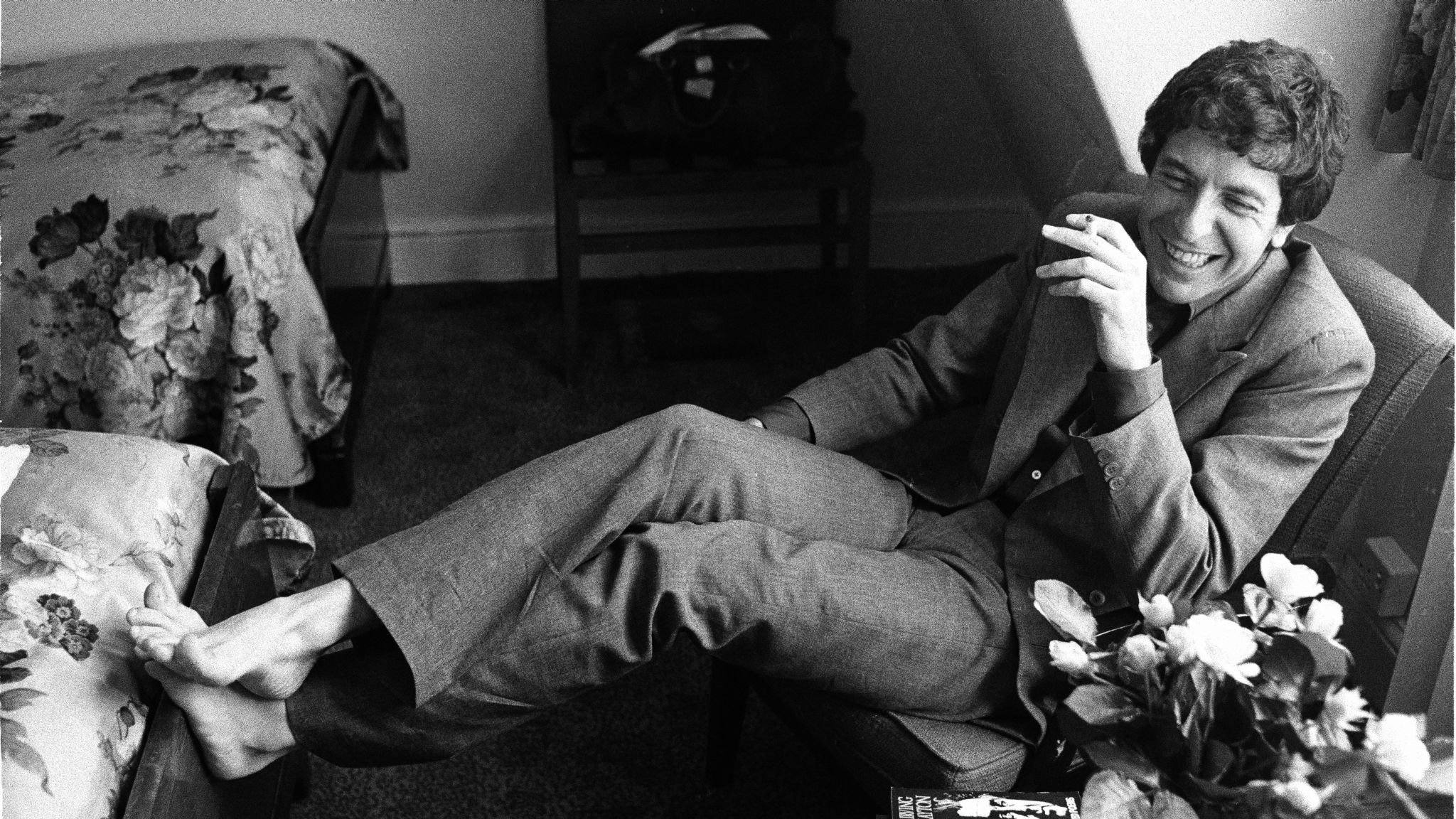Somewhere in the world, possibly hanging unassumingly in a wardrobe, or bathetically stowed away, unrecognised, in a dank basement or dusty attic, a famous blue raincoat might be found. It once belonged to Leonard Cohen, and in the early 1970s it was stolen from the New York apartment belonging to the songwriter’s lover, Marianne Ihlen.
While Cohen was never reunited with his Burberry coat, it was immortalised as the central image in one of his most beloved and enigmatic songs. Released on the 1971 album Songs of Love and Hate, “Famous Blue Raincoat”offers up perhaps the clearest synthesis of Cohen the poet-novelist and Cohen the singer-songwriter, as he relays a vividly characterised tale of adultery, regret and loneliness in just five minutes.
Delivered in Cohen’s warm, recitative style, the song takes the form of a letter (partly composed in an unusual poetic metre called amphibrach) addressed to an unnamed man who, we learn, once unsuccessfully tried to prise away Jane, the wife of the writer (a fictionalised version of the singer himself). But this is no ordinary torrid love-triangle narrative, filled with wounded egos, bitterness, blame and recriminations. Trust Leonard Cohen to come up with something altogether more subtle, spare, and quietly devastating.
The letter is in fact curiously fraternal, even conciliatory towards the narrator’s rival. The tragedy here was never the infidelity, but the way in which the narrator was resigned to the decay of his marriage. “Thanks, for the trouble you took from her eyes, I thought it was there for good, so I never tried,” he concedes in an arresting linethat distils the heart of marital despair and miscommunication as well as anything you’d find in a book by Richard Yates or John Cheever.
But such is the rich ambiguity of Cohen’s words that no amount of parsing of the lyrics could yield a definitive interpretation of “Famous Blue Raincoat”. Was there, for instance, ever a second man, or was he an alter-ego, an abstract spectral presence? Is “going clear” a euphemism for sex, or a reference to a stage of Scientology, in which Cohen rather uncharacteristically dabbled at the time?
Cohen provided little elucidation, possibly so as to not attenuate the song’s open, inscrutable nature, but mainly because he didn’t really have the answers himself. In an interview in 1994, he admitted: “It was a song I've never been satisfied with. I've always felt that there was something about the song that was unclear.”
An array of artists admired it enough to take it on themselves. In 1986, Cohen’s longtime backing singer Jennifer Warnesgave an emotive, jazz-inflected rendition — a version that Cohen worked on himself, and one that he said he preferred to the original. The lyrics were slightly adapted so that the narrator is recast as an observer rather than a participant in the affair; “my woman” becomes “some woman” and the letter’s sign-off is no longer “L. Cohen”, but “a friend”.
Joan Baezrecorded a moving iteration in 1989 that features her signature quivering vocals and retains Warnes’s lyrical tweaks. And the equally prodigious coverer Tori Amos included “Famous Blue Raincoat” in many of her live sets; hers is a beautifully aching, original piano-led rendition.
Elfin Norwegian singer Aurora provided a more idiosyncratic live interpretation in 2017, complete with tinkling keys and a ghostly choir. But while her vocals are little short of stunning, her slightly histrionic gestures jar with the song’s more restrained sadness. Sticking with ethereal Nordic artists, the Faroese singer-songwriter Eivorhas also performed the song live several times in versions that possess a Jeff Buckley tone thanks to her reverb-heavy finger-picked guitar playing.
Similarly atmospheric and eerie is the gothicky effort by Americana duo The Handsome Familyfrom a 2006 compilation album of Cohen covers; the fact that they’re husband and wife lends added authenticity to the story.
Elsewhere, the ever-doleful Damien Rice proved the perfect choice to cover the song at a 2017 tribute concert for Cohen; his superb, pain-stricken rendition features orchestral accompaniment and a dramatic coda that repeats the song’s most confrontational line: “My brother, my killer.” Fellow Irishman Glen Hansard, meanwhile, gave a much more pared-back, but no less affecting, version for a live radio session.
Despite his personal reservations about the track, Cohen continued to play it throughout his long career. Perhaps he kept returning to it in the hope that with each performance he’d come closer to finally discovering some clarity within the song. Or maybe he simply never stopped missing his stolen, famous blue raincoat.
What are your memories of ‘Famous Blue Raincoat’? Let us know in the comments section below.
‘The Life of a Song Volume 2: The fascinating stories behind 50 more of the world’s best-loved songs’, edited by David Cheal and Jan Dalley, is published by Brewer’s.
Music credits: Columbia; Porch Light LLC; Bela Records; By Norse Music; Decca (UMO)
Picture credit: Michael Putland/Getty Images
